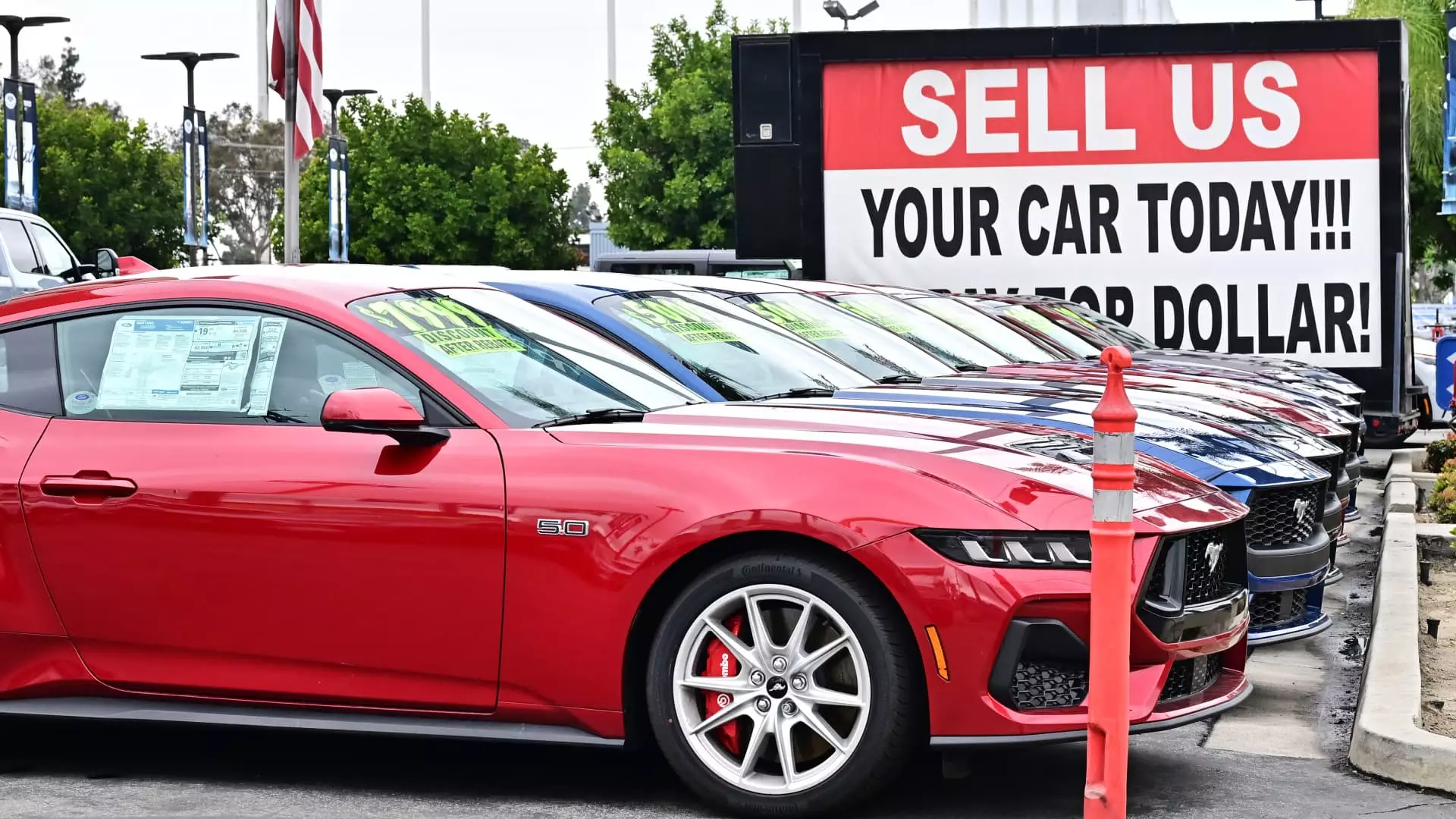In recent market trends, the used car landscape is experiencing a sudden, albeit minor, denouement. The 1.5% decrease from April to May in used vehicle prices, as reported by the Cox Automotive’s Manheim Used Vehicle Value Index, is a telling signal of consumer sentiment and market conditions. While it might seem trivial, this decrease comes after a surge that marked the highest wholesale values since October 2023. The sudden retreat indicates a temporary halt to what was an escalating trend fueled by consumer urgency amidst fears of heightened prices owing to tariffs. One needs to question whether this brief lapse in prices is indicative of a larger systemic instability rather than a mere market correction.
The Ripple Effect of Tariffs on Usage
Despite President Trump’s tariffs on new imported vehicles, which should ostensibly not affect used vehicles directly, one cannot ignore the undercurrents at play. New vehicle prices, along with altered production dynamics, create a cascading effect that ultimately reverberates through to the used car market. The average American tends to purchase used vehicles as a practical choice, influenced heavily by the skyrocketing new-car prices. This is where the used car market intersects significantly with governmental policy; political decisions have material consequences for everyday life.
Supply Chain Snags and Inventory Challenges
Current inventory levels for used vehicles remain disconcertingly low at 2.2 million. This scarcity reflects broader issues in manufacturing and logistics that have plagued the auto industry since the pandemic’s onset. Consumers have been clinging to their cars longer than ever—an instinctual move driven by uncertainty and economic pressure. Meanwhile, fewer new vehicles have entered the market due to ongoing supply chain disruptions. One must ponder how long this inventory crisis can sustain itself; the economic principles of supply and demand may soon result in another inflationary spike.
Retail Pricing Lagging Behind Wholesale Trends
An interesting dynamic at play is the disconnect between wholesale price reductions and retail pricing. Retail prices for consumers are adjusting but not at the pace anticipated given wholesale trends. This lag indicates something far more troubling: it reveals underlying greed or caution from sellers unwilling to pass on cost savings to customers immediately. It raises questions about market competitiveness and consumer exploitation amid economic volatility. Shouldn’t consumers benefit from falling wholesale values rather than endure continued high retail prices during such fluctuations?
Future Implications and the Call for Market Transparency
These dissonances portray a market that’s at a crossroads. The recent stabilization of used vehicle prices after significant volatility appears tenuous. Moving forward, transparency in pricing structures is essential if confidence is to be restored among consumers who increasingly feel apprehensive about making significant financial commitments in the wake of fluctuating market conditions. The imminent future of used vehicles sales will require not only economic insight but also a strategic response to evolving consumer behaviors and external economic challenges. A call to arms for liberal market advocates: we must prioritize informed engagement in political economic discourse to unearth the complexities affecting our daily lives.

